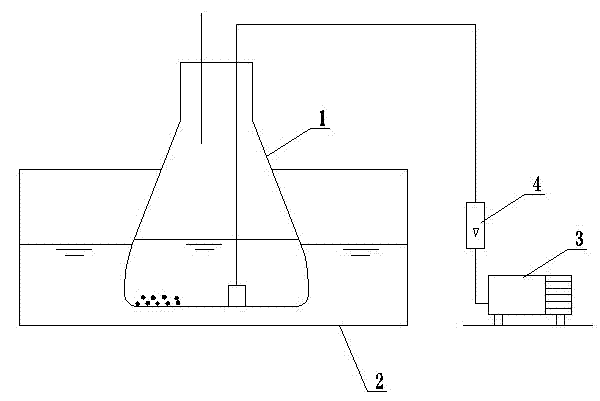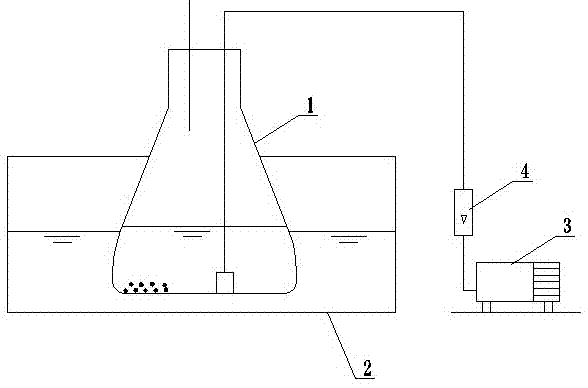Method for removing heavy metal Cd from river sediment
A technology for river sediment and heavy metals, applied in sludge treatment, biological sludge treatment, etc., can solve the problems of lack, harm to human health, large energy consumption, etc., and achieve simple process, low implementation cost and good treatment effect Effect
- Summary
- Abstract
- Description
- Claims
- Application Information
AI Technical Summary
Problems solved by technology
Method used
Image
Examples
Embodiment Construction
[0019] The present invention will be further described in detail below in conjunction with the accompanying drawings and specific embodiments.
[0020] The present invention is firstly the cultivation and acclimation of sulfur bacteria and the preparation of bioleaching inoculum, absorbing 10ml of strain samples from coal mine pit water and pit mud, adding 30ml 9k liquid culture medium, and starting to cultivate under the condition of 30°C, when the solution Turn into reddish brown, absorb 10ml of supernatant and add 90ml of 9k liquid medium, culture again under the same conditions, transfer like this 5 times, the time until reddish brown appears changes from original 5d to 1d, and domesticated ferrous oxide is obtained Sulfur bacteria inoculum (hereinafter referred to as inoculum).
[0021] 9K medium is composed of A component and B component, the pH value after mixing is 2.5, A component includes (NH 4 ) 2 SO 4 3.0g, KCl 0.1g, K 2 HPO 4 0.5g, MgSO 4 ·7H 2 O 0.5g, Ca...
PUM
 Login to View More
Login to View More Abstract
Description
Claims
Application Information
 Login to View More
Login to View More - R&D
- Intellectual Property
- Life Sciences
- Materials
- Tech Scout
- Unparalleled Data Quality
- Higher Quality Content
- 60% Fewer Hallucinations
Browse by: Latest US Patents, China's latest patents, Technical Efficacy Thesaurus, Application Domain, Technology Topic, Popular Technical Reports.
© 2025 PatSnap. All rights reserved.Legal|Privacy policy|Modern Slavery Act Transparency Statement|Sitemap|About US| Contact US: help@patsnap.com


